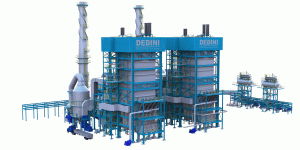 As the dramatic effects of climate change are being realised and organisations around the world look to reduce the impact of their operations on the environment, it is becoming clear that recycling is one of the best and most effective means of reducing energy consumption and carbon emissions. Recycling also preserves scarce natural resources, saves water and reduces pollution and our dependence on landfill. In addition, design and manufacturing companies must be compliant with the UK’s WEE Directive; which aims to both reduce the amount of electrical and electronic equipment being produced and to encourage reuse and recycling.
As the dramatic effects of climate change are being realised and organisations around the world look to reduce the impact of their operations on the environment, it is becoming clear that recycling is one of the best and most effective means of reducing energy consumption and carbon emissions. Recycling also preserves scarce natural resources, saves water and reduces pollution and our dependence on landfill. In addition, design and manufacturing companies must be compliant with the UK’s WEE Directive; which aims to both reduce the amount of electrical and electronic equipment being produced and to encourage reuse and recycling.
SIMS Metal Management, based in Newport, South Wales is a global leader of metals and electronics recycling. In order to meet the increasing demand for their services they commissioned the development of new multi-million pound recycling plant, placing part of the project with Cambridge based company Consul UK.
“This was a fast paced project and the goalposts moved constantly throughout its duration,” Phil Wetton, Consul UK Managing Director. “SOLIDWORKS gave us the ability to respond to the changes quickly and to meet the exceptionally tight timescales involved. We have been dealing with a large volume of equipment, so some of the features in SOLIDWORKS such as Speedpak enabled us to work with large assemblies on a laptop.”
One of the major challenges for the development team was to achieve a suitable equipment layout that optimised the best process throughput considering the size constraints of the building. SOLIDWORKS 3D CAD software helped test many different layouts in a short amount of time, a task that would have been virtually impossible with traditional 2D formats.
SOLIDWORKS 3D visualisation enabled the setting of clear expectations in terms of equipment position, size and colour. Importantly, this brought senior management personnel such as the European Technical Director in to the design loop and so project expectations were set and agreed early in design process where the opportunity for change was high and the cost of change was low. SOLIDWORKS was also used to deal with a broad range of manufacturing disciplines that included sheet metal, large fabricated parts, steel structures and the integration of equipment designs from European suppliers that were already using SOLIDWORKS and AutoDESK Inventor. The SOLIDWORKS DWG Editor also allowed existing 2D data in the DWG format to be accessed and used to create new equipment.
SOLIDWORKS Simulation was used to ensure that the tables would withstand the dynamic loading that was to be placed on the structure in several directions by the vibrating Vacuum band filter. In dealing with some 3,000 different parts of equipment, the ability for SOLIDWORKS to produce an accurate and up to date Bill of Material (BOM) proved to deliver significant time-savings and avoided costly mistakes in material ordering. SOLIDWORKS eDrawings, a free software package that enables anyone with a computer to view a 3-dimensional design, proved to be a valuable communication tool and was used to send design data to specialist equipment manufacturers for comment and review.
Throughout the design process, UK SOLIDWORKS supplier, Innova Systems, was at hand to provide training and technical support. Innova are a leading reseller of SOLIDWORKS technologies with a multi-award winning Technical Support team.
“Innova Systems proved to be a valuable extension of our design team, providing responsive and expert advice when we really needed it,” said Phil Wetton. “They employ well trained and qualified engineers who can react quickly with the most demanding of technical problems”.


















